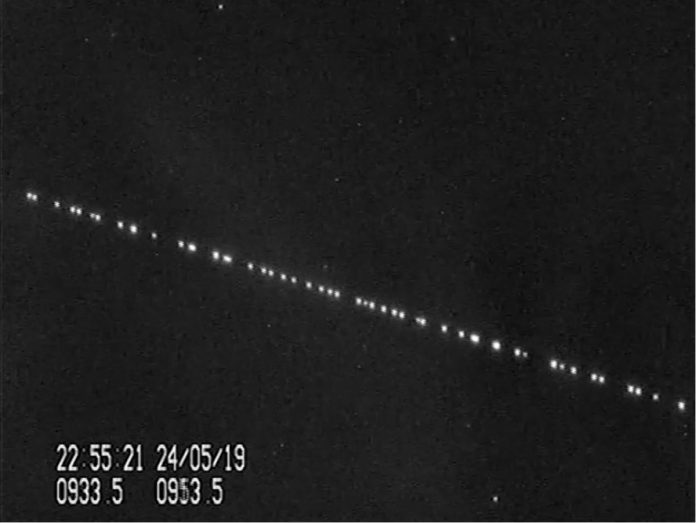Last Updated on January 5, 2023 by Raoul Patel
After launching its latest set of 60 satellites via the Falcon 9 rocket from Cape Canaveral, Space X has 180 satellites in orbit around the earth, but astronomers are concerned.
The network of satellites, dubbed the Starlink constellation, are part of the SpaceX goal to beam internet connectivity to earth, covering more of the planet than ever before. With 180 spacecraft now in orbit around the earth’s atmosphere SpaceX is near to having the most satellites in space. Starlink’s internet could launch in 2020 with limited coverage and is already being tested by the US Air Force. But SpaceX isn’t finished yet.
The latest group of satellites launched from Cape Canaveral Air Force Station on January 6, 2020 marking the Falcon 9’s fourth journey to space and back after landing on the SpaceX drone ship.
The Verge reports that concerns were raised by astronomers about the brightness of the company’s satellites interfering with space observation. As a result, SpaceX has designed one of the 60 new satellites coated in a material that will make it appear darker in orbit. If it proves a successful experiment further satellites could have the same coating in an attempt to stop them from interfering with astronomers view of the universe from earth. Astronomers noticed the visibility of the satellites after the first group launched in May 2019. Bright satellites can create white streaks through long-exposure images taken by ground-based telescopes.
The high-number of low orbit satellites planned by SpaceX is also concerning astronomers. The company has permission from the Federal Communications Commission to launch 12,000 satellites already and it has asked the International Telecommunication Union for permission to launch a further 30,000 satellites. The resulting network would provide space-based global internet coverage. It would also mean that at least one satellite would be in view of the earth at any time and with an additional 30,000, sky watchers would be able to see the satellites as tiny bright specks overhead.
SpaceX plans two further launches with 60 satellites each on the next month and to launch a rocket with further batches of the same size every few weeks this year. It aims to complete 6,000 launches of its 12,000 permitted satellites by 2024.
SpaceX, or Space Exploration Technologies Corp, was founded by Elon Musk in 2002 with the overriding goal of reducing the cost of space travel and to eventually enable the colonization of Mars. It’s Falcon 1 rocket was the first privately funded liquid-propellant rocket to reach orbit. Falcon 9, if used for a fifth satellite launch this month would be the first of the SpaceX rockets to achieve so many trips. Musk’s space company is also credited with being the first private company to recover a spacecraft and the first company to send a craft to the International Space Station (ISS). Under contract with NASA SpaceX has now flown 18 supply missions to the ISS and is developing its Crew Dragon space craft to carry astronauts to the ISS in future. The first manned test of Crew Dragon is set to take place in February of this year.

